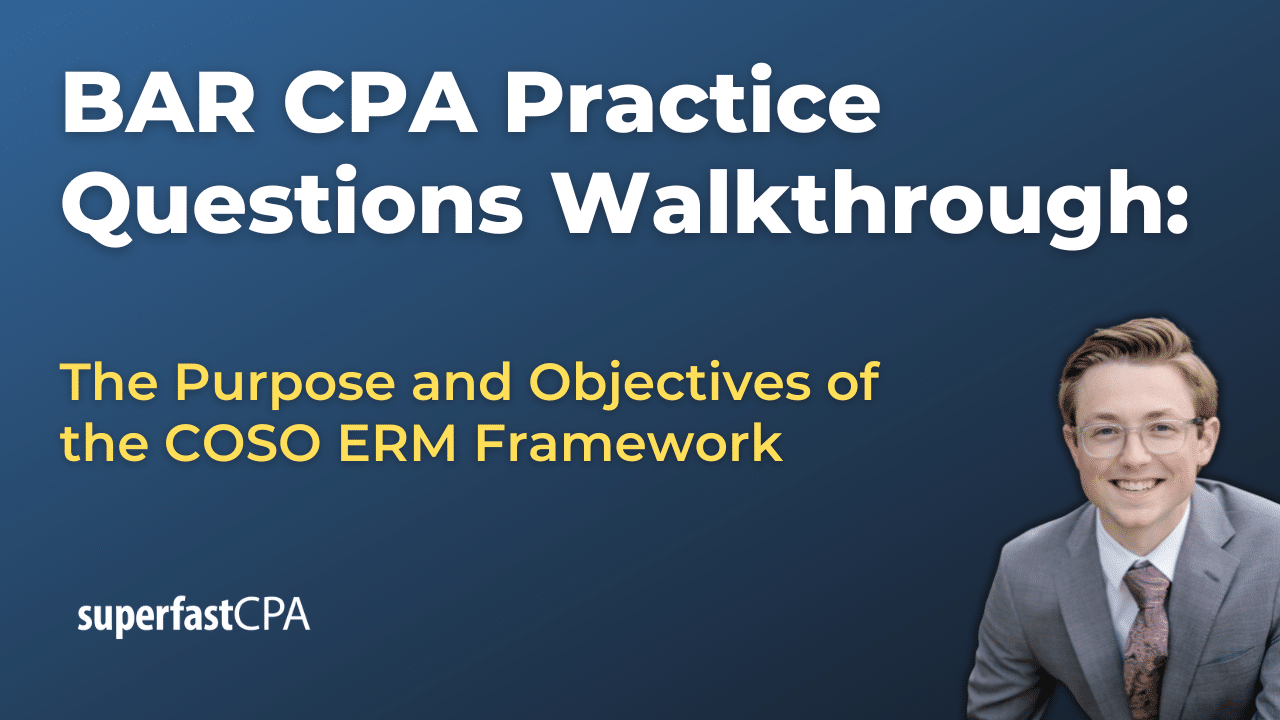In this video, we walk through 5 AUD practice questions teaching about calculating performance materiality and tolerable misstatement. These questions are from AUD content area 2 on the AICPA CPA exam blueprints: Assessing Risk and Developing a Planned Response.
The best way to use this video is to pause each time we get to a new question in the video, and then make your own attempt at the question before watching us go through it.
Also be sure to watch one of our free webinars on the 6 “key ingredients” to an extremely effective & efficient CPA study process here…
Calculating Performance Materiality and Tolerable Misstatement
When auditors assess financial statements, they rely on performance materiality and tolerable misstatement to determine the risk of material misstatement and plan audit procedures accordingly. These concepts influence the nature, timing, and extent of audit work, helping auditors balance efficiency with risk management.
Performance Materiality
Performance materiality is a fraction of overall materiality that helps auditors identify potential misstatements at an account level before they accumulate into a material misstatement for the financial statements as a whole. This percentage varies based on risk assessments:
- Low risk of misstatements → Higher performance materiality percentage (e.g., 60-75% of overall materiality)
- High risk of misstatements → Lower performance materiality percentage (e.g., 50-60% of overall materiality)
Example:
An auditor determines that overall materiality is $100,000. The firm’s guidelines state that performance materiality is between 50% and 70% of overall materiality, depending on risk. If the assessed risk is high, the auditor may choose 50% ($50,000). If the risk is low, they may use 70% ($70,000). A lower percentage results in more extensive testing.
Tolerable Misstatement
Tolerable misstatement is the maximum misstatement an auditor is willing to accept for a specific account without concluding that the financial statements are materially misstated. Some firms define it as a percentage of performance materiality, while others calculate it directly as a percentage of overall materiality.
Example:
If performance materiality is set at $60,000, and tolerable misstatement is 75% of performance materiality, then tolerable misstatement for an account might be $45,000. However, some firms apply tolerable misstatement directly as a percentage of overall materiality (e.g., 80% of $100,000 = $80,000).
Adjustments Based on Risk Factors
Tolerable misstatement is sometimes adjusted based on specific account characteristics. Auditors may lower tolerable misstatement if:
- The account balance has increased significantly compared to prior years.
- The account represents a large percentage of total assets.
- The account has a history of misstatements.
Example:
If an account typically uses 80% of overall materiality for tolerable misstatement but has grown by 30% year over year, firm policy may reduce the percentage to 60% of overall materiality to require more detailed audit procedures.
Impact on Audit Procedures
The chosen levels of performance materiality and tolerable misstatement affect audit planning:
- Higher tolerable misstatement → Less detailed testing, more reliance on analytical procedures
- Lower tolerable misstatement → More detailed substantive testing, larger sample sizes
By carefully setting performance materiality and tolerable misstatement, auditors can focus their efforts efficiently while ensuring financial statements remain free of material misstatement.













